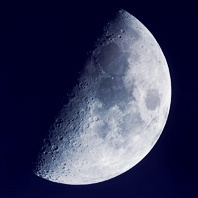Almost exactly 40 years ago, on 06.02.1971, Alan B. Shepard succeeded the furthest one-handed golf swing in history to date, as commander of the Apollo 14 mission. He did not accomplish this due to any extraordinary abilities as a golf player, but because he struck the golf ball on the moon. And because of the prevailing, scarce amount of gravity and the absent braking effect in the atmosphere, the ball flew extremely far.
Shepard had to strike the ball one-handedly, as the rigid space suit did not allow two-handed play. He undertook four attempts and struck two balls altogether. How far exactly they flew has not been documented, however, one can assume a couple of hundred metres. In the original audio material of NASA, you can hear Shepard saying jokingly, after his last tee off »Miles and miles and miles …«.
Read more
Have you ever seen a face or shape of an animal in passing by clouds? This tendency of our perception to find structures within an image or a pattern, is called pareidolia (derives from Greek eidolon = picture). Essentially, this is a misperception where we see objects changing subjectively. But this can also be so much fun and inspire our fantasy to search for these shapes and to find them. Children, in particular, are known to be true masters of this game.
Read more
No, this is not about another sequel of the science fiction movie or whether Arnold Schwarzengger is planning a trip to the moon … It is more about an astronomical term, where »terminator« describes the day-night border of a celestial body. This is the visible border between the illuminated side and the dark side of the object, being the border between day and night on the celestial body. The word »terminator« derives from Latin »terminare« = conclude, restrict.
Read more



